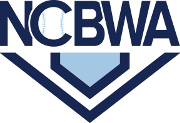The “coefficient of restitution” bats (also known as BBCOR), which were reported on here last summer (see New bat restrictions for the 2011 season) have now been in use for a full season.
The change has been an improvement. The pace of a college baseball game is now like a wood bat game, without the high cost of wood bats. There have been fewer blowouts, although teams in the Red River Conference other than LSU-Shreveport may choose to argue about this. Games have been shorter. Columnist Ron Morris of Columbia, SC's The State wrote this in a good analysis here: “With the use of energy-sapped bats this season, the college game became real baseball again. For the first time since the advent of aluminum bats, pitching and defense returned to being the cornerstones of the game, replacing the pop-fly home run and off-the-fists double to the gap.” According to one NAIA coach, “the good hitters are still good hitters, the bad hitters are outs, and you are not worried about a nine-hole hitter hitting a home run, which is the way it should be.”
According to another NAIA coach, “the ball still jumps off the bat if it is hit on the sweet spot. The biggest difference I noticed was that the ball seemed to not carry as much as before when hitting a deep fly ball, hard ground balls/line drives hit solid didn’t seem to have much effect. I did notice that jam shots were not rewarded off the bat as much as was the case with the old bats.”
One concern expressed a year ago was “all bats are equal,” that bat manufacturers would lose the ability to claim that their bats are better than the competition's bats. That didn't happen, because different bats still have a different feel to the players swinging them. DeMarini and Rawlings bats turned out to be more popular among players, despite some complaints about DeMarini during the Fall season. (National champion Concordia-Irvine uses DeMarini bats.) Easton had some early problems with bats with defective caps, but were agressive at replacing them under warranty.
One thing that you can take to the bank is, neither the NAIA nor the NCAA will be going back to the “hot” bats; to do so would create a liability issue. The coefficient of restitution bats have set a new benchmark for safety. If “hot” bats were reintroduced, the family of a player injured in this situation could claim in court that the sanctioning body was negligent in acting in the interest of the safety of the players.




